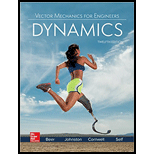
A 10-Ib block B rests as shown on a 20-1b bracket A. The coefficients of friction are

(a)
Maximum weight of block C if block B is not to slide on bracket A.
Answer to Problem 12.31P
Maximum weight of block C is
Explanation of Solution
Given:
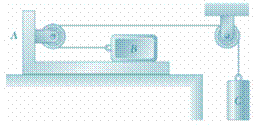
Concept used:
Kinematics :
Let
Let
Note that
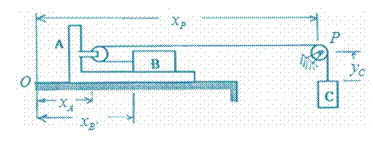
The cable length is fixed.
Differentiating and noting that
Here.
Kinetics :
Let
The free body diagrams are shown here:
Bracket A:
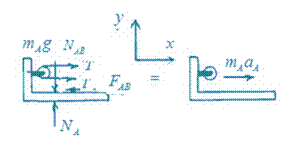
Block B:
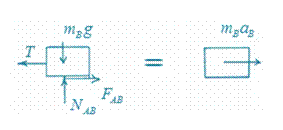
Block C:
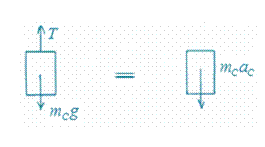
Bracket A:
Block B:
Block C:
Adding Eqs. (2). (3) and (4) and transposing.
Subtracting Eq. (4) from Eq. (3) and transposing.
No slip between A and B.
From Eq. (1).
From Eq. (5).
For impeding slip.
Substituting into Eq. (6).
Solving for
(b)
Accelerations of A, B, and C, if the weight of block C is 10 percent larger than the result of part a.
Answer to Problem 12.31P
Accelerations of A. B and C:
Explanation of Solution
Given:
Since slip is occurring.
Eq. (6) becomes.
Or:
With given data. Eq. (5) becomes
Solving Eqs. (1). (7). and (8) gives
So,
And,
And
Want to see more full solutions like this?
Chapter 12 Solutions
VECTOR MECH...,DYNAMICS(LOOSE)-W/ACCESS
- CORRECT AND DETAILED SOLUTION WITH FBD ONLY. I WILL UPVOTE THANK YOU. CORRECT ANSWER IS ALREADY PROVIDED. I REALLY NEED FBD. The roof truss shown carries roof loads, where P = 10 kN. The truss is consisting of circular arcs top andbottom chords with radii R + h and R, respectively.Given: h = 1.2 m, R = 10 m, s = 2 m.Allowable member stresses:Tension = 250 MPaCompression = 180 MPa1. If member KL has square section, determine the minimum dimension (mm).2. If member KL has circular section, determine the minimum diameter (mm).3. If member GH has circular section, determine the minimum diameter (mm).ANSWERS: (1) 31.73 mm; (2) 35.81 mm; (3) 18.49 mmarrow_forwardPROBLEM 3.23 3.23 Under normal operating condi- tions a motor exerts a torque of magnitude TF at F. The shafts are made of a steel for which the allowable shearing stress is 82 MPa and have diameters of dCDE=24 mm and dFGH = 20 mm. Knowing that rp = 165 mm and rg114 mm, deter- mine the largest torque TF which may be exerted at F. TF F rG- rp B CH TE Earrow_forward1. (16%) (a) If a ductile material fails under pure torsion, please explain the failure mode and describe the observed plane of failure. (b) Suppose a prismatic beam is subjected to equal and opposite couples as shown in Fig. 1. Please sketch the deformation and the stress distribution of the cross section. M M Fig. 1 (c) Describe the definition of the neutral axis. (d) Describe the definition of the modular ratio.arrow_forward
- using the theorem of three moments, find all the moments, I only need concise calculations with minimal explanations. The correct answers are provided at the bottomarrow_forwardMechanics of materialsarrow_forwardusing the theorem of three moments, find all the moments, I need concise calculations onlyarrow_forward
- Can you provide steps and an explaination on how the height value to calculate the Pressure at point B is (-5-3.5) and the solution is 86.4kPa.arrow_forwardPROBLEM 3.46 The solid cylindrical rod BC of length L = 600 mm is attached to the rigid lever AB of length a = 380 mm and to the support at C. When a 500 N force P is applied at A, design specifications require that the displacement of A not exceed 25 mm when a 500 N force P is applied at A For the material indicated determine the required diameter of the rod. Aluminium: Tall = 65 MPa, G = 27 GPa. Aarrow_forwardFind the equivalent mass of the rocker arm assembly with respect to the x coordinate. k₁ mi m2 k₁arrow_forward
 International Edition---engineering Mechanics: St...Mechanical EngineeringISBN:9781305501607Author:Andrew Pytel And Jaan KiusalaasPublisher:CENGAGE L
International Edition---engineering Mechanics: St...Mechanical EngineeringISBN:9781305501607Author:Andrew Pytel And Jaan KiusalaasPublisher:CENGAGE L
